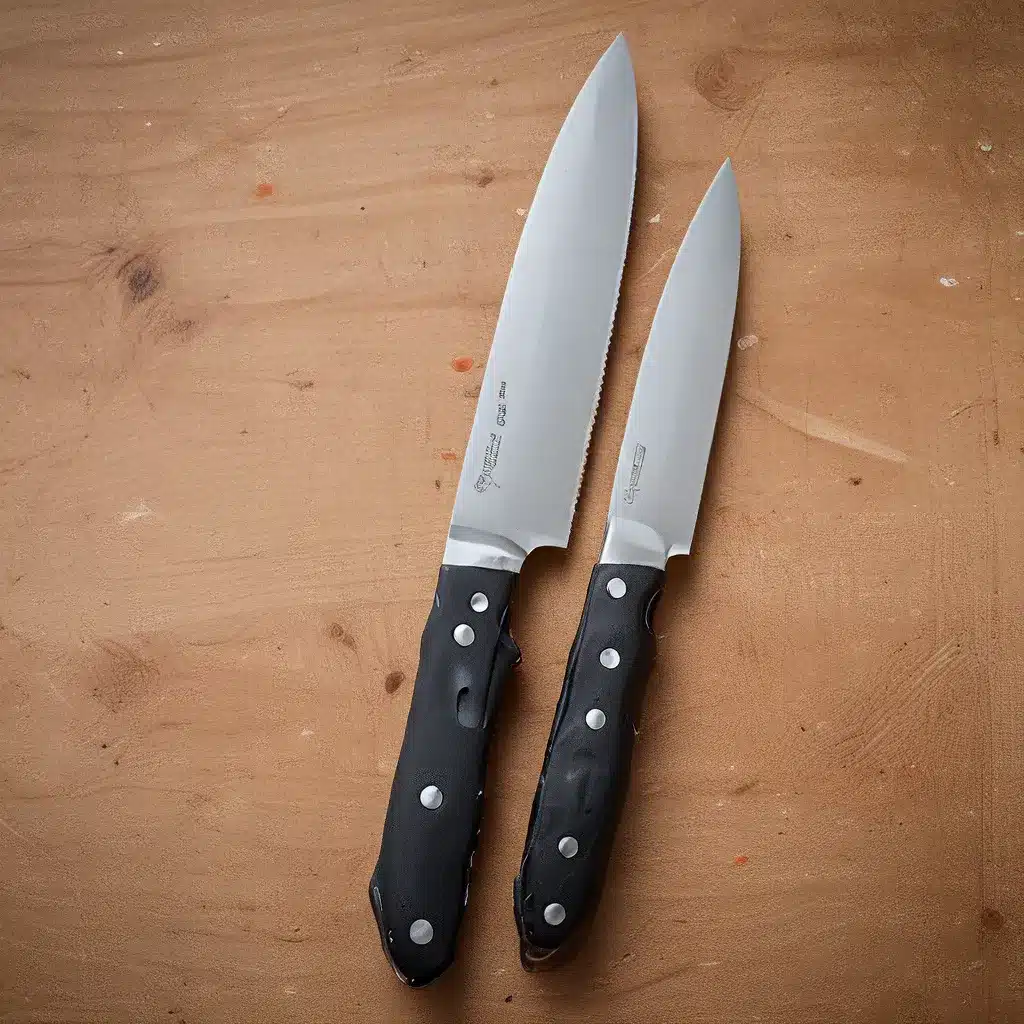
As someone who loves spending time in the kitchen, I know firsthand the importance of knife safety. After all, with so many sharp blades and potential hazards, the kitchen can be a veritable minefield if you’re not careful. But you know what they say – with great power comes great responsibility. And when it comes to knives, that couldn’t be more true.
Sure, I could regale you with tales of my own kitchen mishaps – the time I tried to slice an avocado and ended up with a trip to the ER, or the incident involving a wayward pumpkin and a dull carving knife. But let’s be honest, who hasn’t been there? The real question is, how do we prevent these accidents from happening in the first place?
Mastering the Art of Knife Handling
One of the keys to knife safety is understanding how to properly handle these powerful tools. It’s all about developing good habits and techniques that become second nature. And trust me, it’s not as complicated as it might seem.
First and foremost, it’s essential to choose the right knife for the job. Don’t try to slice a delicate strawberry with a huge chef’s knife – that’s just asking for trouble. Instead, opt for a small, sharp paring knife. And when it comes to cutting through tougher items like watermelons or pumpkins, a serrated bread knife can be a lifesaver.
But it’s not just about the knife itself – the way you hold it is crucial as well. Resist the temptation to press your index finger against the back of the blade, and instead, get a firm grip on the handle. And when you’re cutting, make sure to keep your knuckles curled under, with your fingertips out of harm’s way.
Preventing Slip-ups and Slides
Another common source of kitchen mishaps is a slippery cutting board. After all, the last thing you want is for your knife to go sliding off the surface and straight into your hand. To prevent this, consider investing in a non-slip cutting board or placing it on a damp towel or silicone mat.
And speaking of cutting boards, it’s always a good idea to choose one that’s the right size for the task at hand. Those tiny little boards might look cute, but they’re a recipe for disaster when you’re trying to tackle a large item like a watermelon or a turkey. Trust me, you’ll thank me later when you’ve got a stable surface to work with.
Staying Focused and Staying Safe
Of course, knife safety isn’t just about the physical tools and techniques – it’s also about your state of mind. When you’re wielding a sharp blade, it’s crucial to stay focused and present. That means no distractions, no multitasking, and definitely no reaching for that knife while you’re deep in conversation.
And let’s not forget about the little ones in our lives. If you’ve got kids in the kitchen, make sure to keep a close eye on them and teach them the importance of knife safety from an early age. After all, those tiny fingers are just begging to get nicked by a wayward blade.
The Aftermath: Dealing with Injuries
Now, let’s say the unthinkable happens, and you do end up with a kitchen-related injury. Don’t panic! Minor cuts and nicks can often be treated at home with a little TLC. Just apply pressure to stop the bleeding, clean the wound, and slap on a bandage. And if the pain is getting to be too much, a little over-the-counter medication can work wonders.
But what if the injury is a bit more serious? Deep cuts or those that affect your nerves or tendons are a whole different story. In those cases, it’s best to head to the emergency room or an orthopedic urgent care facility. After all, it’s better to be safe than sorry when it comes to your digits.
Embracing the Joys of Cooking Safely
At the end of the day, knife safety isn’t just about avoiding disaster – it’s about embracing the joys of cooking with confidence and peace of mind. After all, what’s the point of whipping up a delectable feast if you’re constantly worrying about losing a finger in the process?
So, the next time you step into the kitchen, remember to slow down, stay focused, and handle those blades with the respect they deserve. And who knows, maybe you’ll even impress your friends and family with your newfound knife skills. After all, a well-equipped kitchen is only as good as the person wielding the tools.
Happy (and safe) cooking, my friends!


